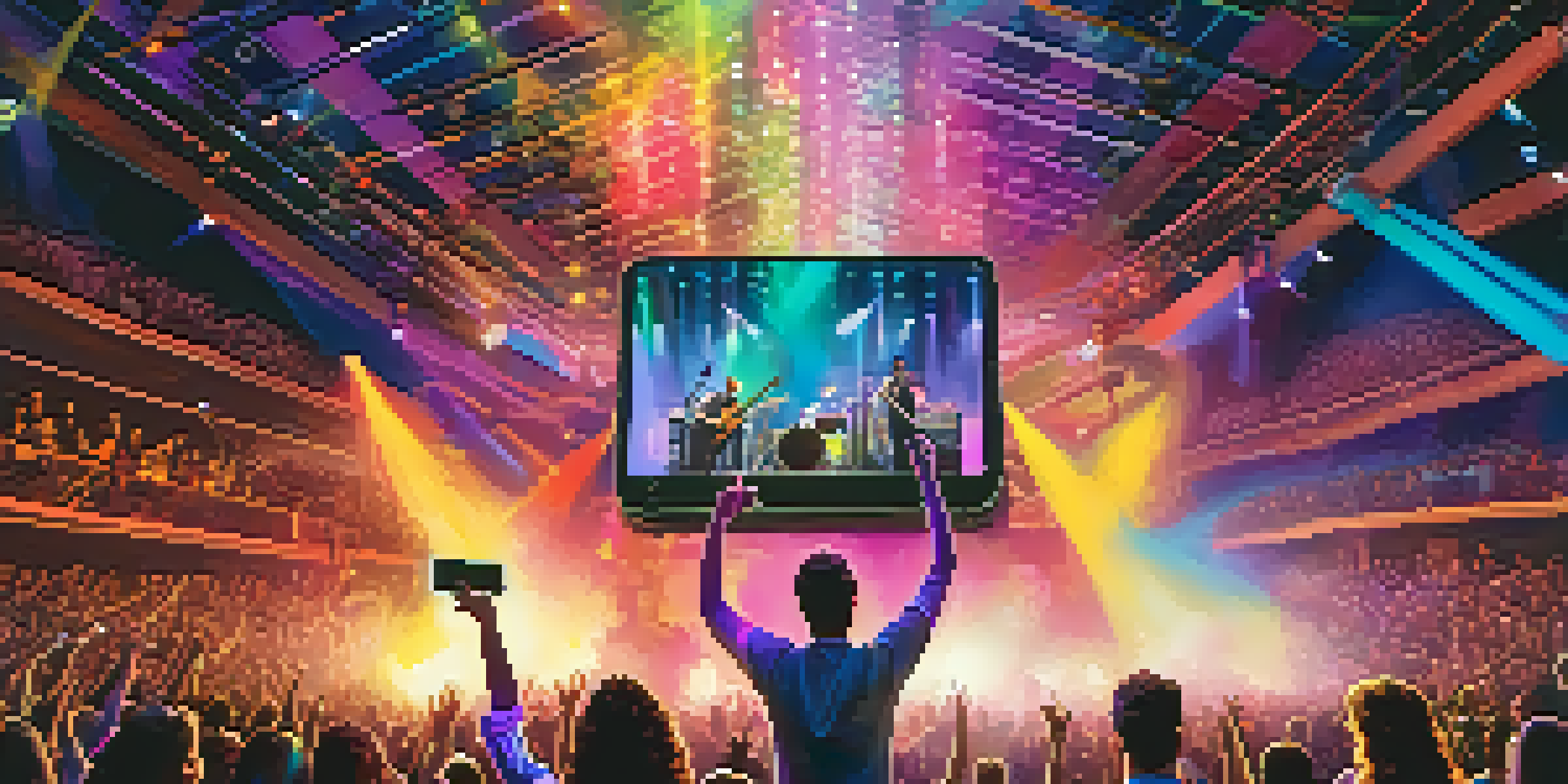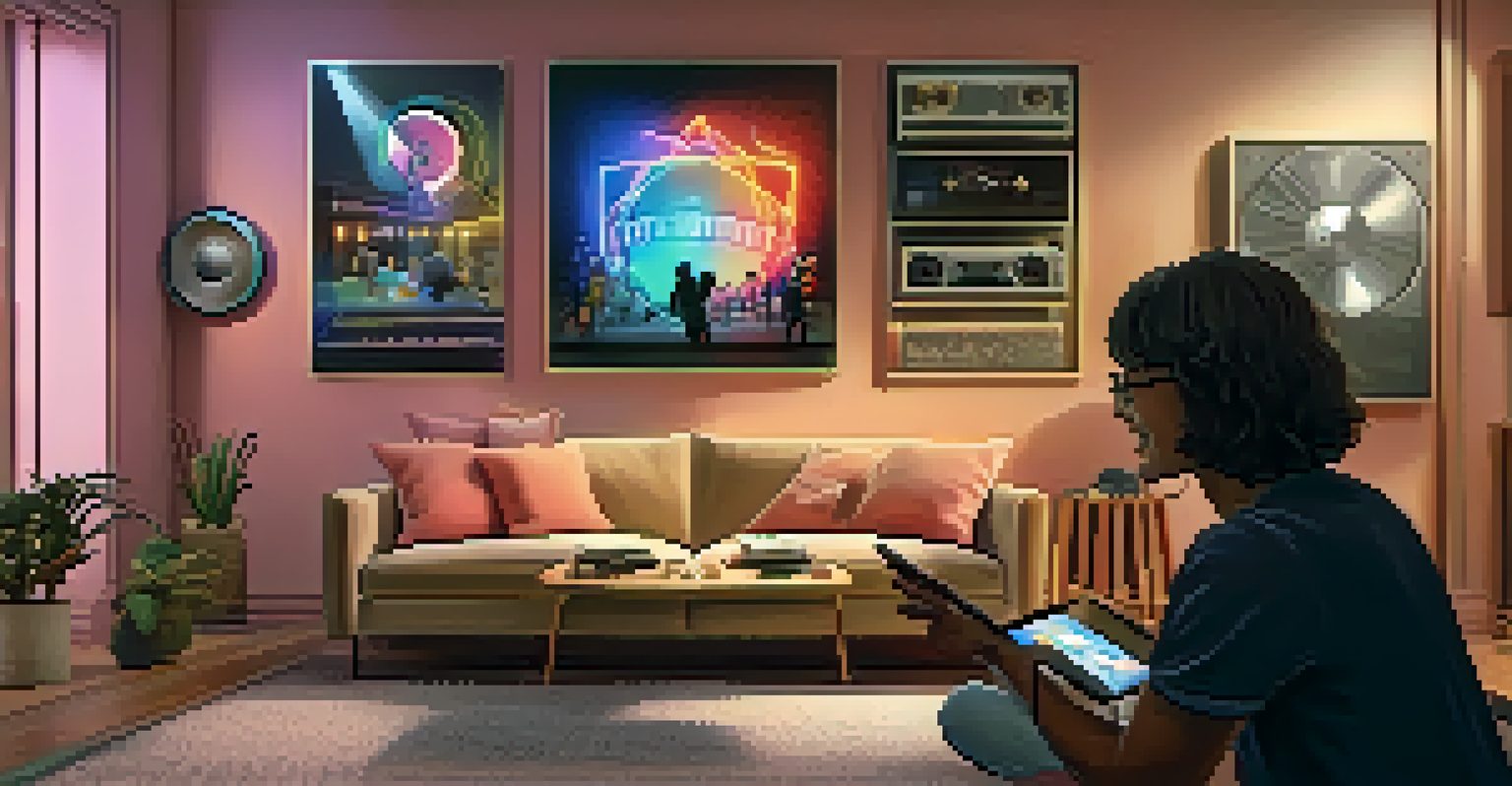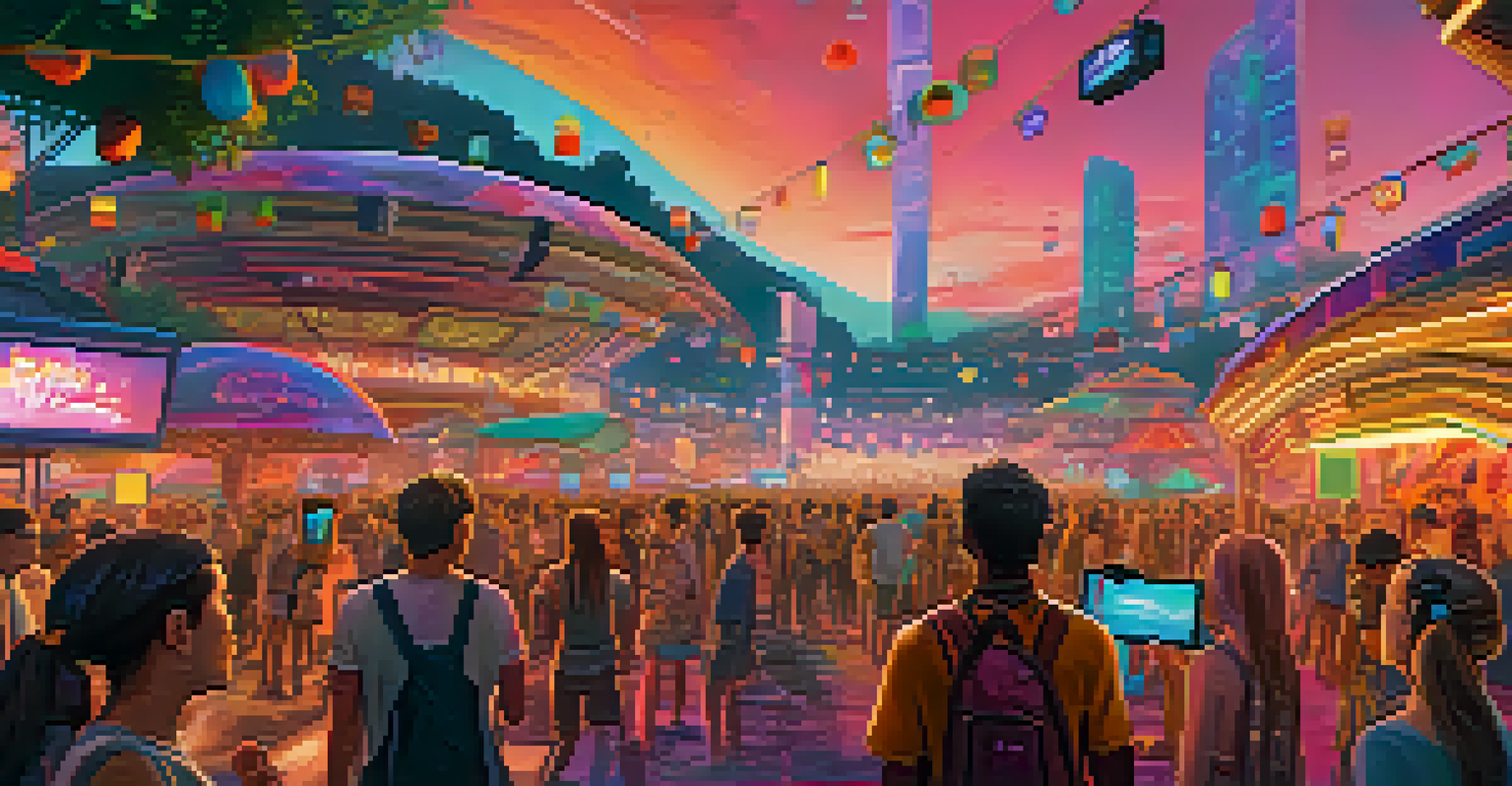The Influence of Augmented Reality on Music Marketing Strategies

Understanding Augmented Reality in Music Marketing
Augmented reality (AR) blends the digital world with the real one, creating immersive experiences for users. In music marketing, AR can enhance interaction and engagement, offering fans a unique way to connect with their favorite artists. Imagine attending a concert where you can see digital elements overlaying the live performance, heightening the overall experience.
Augmented reality is the bridge between the digital and physical worlds, creating experiences that resonate with audiences on a deeper level.
The technology behind AR is becoming more accessible, which opens up new avenues for musicians and marketers alike. With smartphones and AR apps, fans can access exclusive content, like behind-the-scenes footage or interactive album art, right from their devices. This level of engagement not only captivates audiences but also fosters a deeper connection to the music.
As the music industry continues to evolve, understanding how to leverage AR effectively is crucial for staying competitive. Artists who embrace this technology can differentiate themselves in a crowded market, offering fans something memorable and innovative. By transforming traditional marketing strategies, AR is changing the way music is experienced and promoted.
Creating Engaging Fan Experiences with AR
One of the most exciting aspects of AR in music marketing is its potential to create immersive fan experiences. For instance, an artist might host a virtual concert where fans can interact with 3D holograms of the performers. This not only makes the event more memorable but also encourages fans to share their experiences on social media.

Additionally, AR can be used to gamify music marketing, turning listening into an interactive experience. For example, fans could unlock special content by completing challenges or engaging with AR features in a music app. This approach not only keeps fans engaged but also drives word-of-mouth promotion as they share their experiences with others.
AR Enhances Music Fan Engagement
Augmented reality creates immersive experiences that deepen fans' connections with artists and their music.
Moreover, these engaging experiences can lead to increased loyalty and a stronger fan base. When fans feel involved and part of something unique, they're more likely to support the artist by purchasing merchandise, tickets, or music. In this way, AR not only enriches the fan experience but also enhances the artist's overall brand.
Case Studies: Successful Uses of AR in Music Marketing
Looking at successful examples can provide valuable insights into AR's effectiveness in music marketing. For instance, the band Kings of Leon released an album that featured an AR component, allowing fans to interact with the music in a groundbreaking way. This innovative approach not only attracted attention but also engaged listeners on a deeper level.
The future of music marketing lies in creating immersive experiences that allow fans to engage with their favorite artists in new and exciting ways.
Another notable example is Travis Scott's collaboration with Fortnite, where he hosted a virtual concert that drew millions of viewers. This event showcased how AR can transcend traditional concert experiences, making them accessible to fans worldwide. The event was a massive success, highlighting the potential of AR to enhance an artist's reach and engagement.
These case studies demonstrate that when used creatively, AR can significantly impact marketing strategies. By offering unique experiences, artists can capture the attention of both current fans and potential new listeners, ultimately driving their careers forward.
The Role of Social Media in AR Music Marketing
Social media platforms are crucial for amplifying the reach of AR marketing strategies. Artists can share AR experiences through platforms like Instagram and Snapchat, where users can easily engage and share their experiences. This organic sharing not only spreads the word but also creates a sense of community among fans.
Additionally, social media features like filters and lenses allow fans to interact with music in a fun and creative way. For example, an artist could create a filter that fans can use to showcase their love for a new album. This type of engagement encourages fans to participate actively in the marketing campaign and promotes the artist's work naturally.
Social Media Amplifies AR Impact
Social media platforms facilitate the sharing of AR experiences, fostering community and increasing artist visibility.
Furthermore, leveraging influencers on social media can enhance the impact of AR campaigns. When influencers share their experiences with an artist's AR content, it adds credibility and reaches a wider audience. This synergy between AR and social media is essential for maximizing engagement and fostering a loyal fan base.
Challenges in Implementing AR in Music Marketing
Despite its potential, implementing AR in music marketing comes with its own set of challenges. One major hurdle is the technical expertise required to create high-quality AR experiences. Artists and marketers need to invest time and resources into learning how to develop and execute these campaigns effectively.
Another consideration is the varying levels of access to technology among fans. Not all fans may have the latest smartphones or the necessary apps to fully engage with AR content. This disparity could exclude some fans from participating in unique experiences, which can be detrimental to an artist's overall reach.
Finally, measuring the success of AR campaigns can be tricky. Unlike traditional marketing strategies with clear metrics, AR's impact may be more subjective. Marketers need to develop new ways to track engagement and conversion rates to understand the effectiveness of their AR initiatives.
Future Trends: The Evolution of AR in Music Marketing
The future of AR in music marketing looks promising as technology continues to advance. As AR tools become more user-friendly and widespread, we can expect to see even more artists exploring this innovative marketing avenue. This evolution could lead to new forms of storytelling and fan engagement that we can't even imagine yet.
Moreover, the integration of AR with other technologies, like virtual reality (VR) and artificial intelligence (AI), can create even more immersive experiences. For example, combining AR with AI could lead to personalized music recommendations based on individual fan preferences, enhancing the overall experience. This cross-pollination of technologies will likely shape the future landscape of music marketing.
Challenges in AR Adoption Exist
Technical expertise and access disparities pose challenges for artists looking to implement effective AR marketing strategies.
As we move forward, it's essential for artists and marketers to stay updated on these trends. By embracing new technologies and adapting to the changing landscape, they can continue to engage fans in innovative ways. The potential for AR in music marketing is vast, and those who harness it effectively will likely stand out in the industry.
Conclusion: Embracing AR for Music Marketing Success
In conclusion, augmented reality is revolutionizing music marketing strategies by creating engaging and immersive experiences for fans. As artists and marketers embrace this technology, they can differentiate themselves and foster deeper connections with their audiences. The potential for AR to enhance traditional marketing tactics is vast.
By learning from successful case studies and leveraging social media, artists can maximize the impact of their AR initiatives. However, it's also important to be mindful of the challenges that come with implementing this technology, such as access disparities and the need for technical expertise. Navigating these challenges will be key to success.

As we look ahead, the continued evolution of AR in music marketing presents exciting opportunities for artists and fans alike. By embracing this innovative approach, musicians can not only capture attention but also create lasting relationships with their audiences, ultimately driving their careers forward in an increasingly competitive landscape.